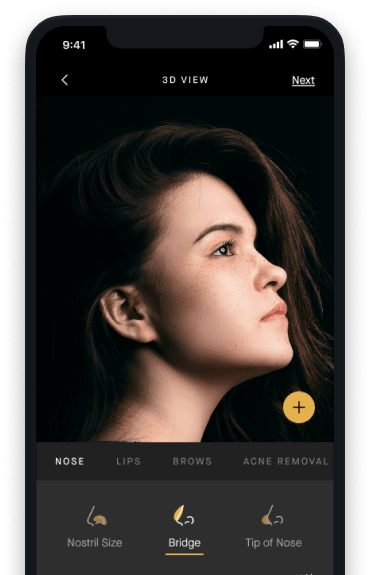 Facial Skin Firming & Lifting Solutions
Facial Skin Firming & Lifting SolutionsThe Science Behind Younger Skin: How Biosomes and Exosomes Are Transforming Healing, Recovery—And Anti-Aging Skincare
Regenerative skincare is on the rise, and biosomes and exosomes are leading the charge. These powerful treatments rejuvenate skin at the cellular level—offering anti-aging benefits without surgery. Here’s what you need to know.
Last year, we predicted that exosomes would be one of the hottest aesthetic trends for 2024. While we were right that they’ve become increasingly popular, experts say we’re only at the tip of the iceberg; market forecasters expect the sector to grow from a $100 million market to a $1.9 billion market in just one decade.
So, what exactly are biosomes and exosomes and their uses? Keep reading as we answer all of your burning questions from how they can help with anti-aging to how they’re different from stem cells.
WHAT ARE BIOSOMES AND EXOSOMES IN REGENERATIVE MEDICINE?
Exosomes are naturally occurring tiny, extracellular vesicles released by stem cells. In other words, they’re teeny tiny membrane-bound particles that are only 30 to 150 nanometers big. They act as messengers between cells, transferring proteins, lipids, and nucleic acids. Exosomes can transmit a signal that can influence recipient cells’ behavior and function in really meaningful ways, like calming inflammation, promoting tissue repair, stimulating blood vessel production, or promoting neural regeneration.
Once you know what exosomes are, biosomes are fairly straightforward; they’re synthetically engineered lipo nanoparticles designed to mimic exosomes. Basically, biosomes are exosome copycats. They come in a multitude of formats with injection and topical being the most common.
Now that we got all of that science out of the way, let’s dive into the magic of these nanoparticles.
HOW DO BIOSOMES AND EXOSOMES PROMOTE TISSUE REPAIR AND HEALING?
Since they aid in cell-to-cell communication and transfer essential biological information, biosomes and exosomes play a crucial role in tissue repair and healing. By activating different pathways, like cell proliferation or differentiation (the process in which a stem cell changes from one type to a differentiated one), they can help regenerate damaged tissues.
What are the benefits of using exosomes in regenerative medicine? Pairing exosomes with regenerative therapies can yield a number of benefits. Most people find that exosomes can help expedite recovery time for wounds and injuries. Since they’re cell-to-cell communication therapies, they can accelerate the healing process. These advanced healing treatments can also help with skin rejuvenation by repairing damaged cells and regenerating tissue as well as help with hair loss by stimulating hair follicles and encouraging new hair growth. Lastly, exosomes can help with pain management for more serious injuries and chronic conditions as they can reduce inflammation and promote musculoskeletal regeneration.
HOW DO BIOSOMES ENHANCE THE EFFECTIVENESS OF REGENERATIVE TREATMENTS?
When it comes to regenerative treatments, like PRP, microneedling, laser therapy, or RF therapy, more and more doctors are turning to exosomes to enhance results and expedite healing.
"Biosomes, which are essentially enhanced or stabilized exosomes, work by amplifying the body's natural regenerative signals," says AEDIT Founder and board-certified facial plastic and reconstructive surgeon, Dr. William Kennedy. "When applied topically—as in exosome facials—or delivered deeper into the skin through microneedling or laser treatments, they accelerate healing, reduce inflammation, and promote collagen and elastin production. This makes them especially effective for improving skin texture, tone, and overall radiance."
"Exosome facials are an excellent option for patients looking to boost the effects of in-office treatments without significant downtime," he explains. "However, like any regenerative therapy, results depend on the individual’s baseline skin health and biology. They tend to work best on patients with mild to moderate signs of aging or those looking to enhance post-procedure recovery—not as a one-and-done fix for more advanced concerns."
WHAT ARE THE DIFFERENCES BETWEEN EXOSOME THERAPY AND STEM CELL THERAPY?
While both are regenerative therapies, exosome therapy and stem cell therapy operate quite differently. Unlike exosomes which are extracellular vesicles, stem cells are full cells. In fact, they’re a specific type of cell in the body and are special because they have the potential to turn into any type of cell. Stem cell-derived therapy involves injecting donor stem cells into the body to differentiate into specific cell types with the goal of replacing and repairing native diseased cells.
"While both exosome and stem cell therapies fall under the umbrella of regenerative medicine, their applications differ significantly," explains Dr. Kennedy. "Stem cell therapy is often used in more intensive medical settings—like oncology or orthopedic repair—because it involves introducing live cells that can differentiate into various tissue types. In contrast, exosome therapy is acellular and better suited for aesthetic and dermatologic uses. Exosomes are essentially messengers—they carry proteins, RNA, and growth factors that stimulate the body’s own repair and rejuvenation processes, which is why they're becoming a game-changer in skin health and anti-aging treatments."
"Because exosomes don’t contain live cells, the risk profile is far lower than that of stem cell therapy," he adds. "There's virtually no risk of immune rejection or uncontrolled cell growth, which makes them a safer, more targeted option for cosmetic and dermatologic applications."
WHAT CONDITIONS CAN BE TREATED WITH EXOSOME THERAPY AND BIOSOME TREATMENTS?
While exosomes and their benefits are still being studied, it’s become a popular phenomenon in skincare. Biosomes offer a promising strategy to repair and regenerate cells as well as treat skin disorders. They’re thought to help even out skin tone by regulating skin pigment or melanin production, aid wound healing, and reduce inflammation. Beyond skincare, exosomes are also being explored as a cellular regeneration therapy for hair loss, neural disorders like Parkinson’s and Alzheimer’s, for pain management from injuries and conditions, like arthritis, herniated discs, and degenerative disc disorder.
IS EXOSOME THERAPY SAFE AND EFFECTIVE FOR JOINT PAIN AND RECOVERY?
Generally speaking, exosome therapy is regarded as safe. Since they are naturally occurring, exosomes are very unlikely to incur adverse reactions or immune rejection. While rare, there is potential for some side effects. Some people may experience localized swelling or redness, infection, or an allergic reaction. It’s also important to note that there are no exosome products that have been approved by the Food and Drug Administration (FDA). In fact, in 2019 the FDA actually put out a public safety notice warning about some clinicians marketing exosomes with unsubstantiated claims. As with all treatments, it’s crucial to work with a well-trusted, credible board-certified practitioner.
"While exosomes are most commonly discussed in the context of skin and aesthetic medicine, their role in orthopedic and sports injury recovery is gaining traction," says Dr. Kennedy. "Exosomes can be injected into joints or soft tissue to reduce inflammation and promote cellular repair, making them a promising option for patients with chronic joint pain, tendon injuries, or early-stage arthritis."
"That said, while early studies and anecdotal evidence are encouraging, the use of exosomes in musculoskeletal medicine is still considered investigational," he notes.
HOW DO BIOSOMES AND EXOSOMES HELP WITH ANTI-AGING TREATMENTS?
Over the past few years, dermatologists and plastic surgeons have been utilizing this anti-aging biotechnology as a new not-so-secret skincare weapon. These nanoparticles have regenerative properties that promote cell renewal and stimulate collagen production, two important factors in achieving youthful-looking skin. By replacing damaged skin cells with healthy ones, doctors can try to reverse signs of aging.
"When it comes to anti-aging, pairing exosomes or biosomes with other aesthetic treatments significantly enhances outcomes," says Dr. Kennedy. "Procedures like microneedling, laser resurfacing, or RF treatments create a controlled injury to stimulate the skin’s repair process—and exosomes supercharge that response. They deliver potent growth factors and signaling molecules right when the skin is primed to absorb them, accelerating healing and boosting collagen production."
"It’s a synergistic approach," he explains. "You’re not just relying on a device to stimulate change—you’re giving the skin the tools it needs to regenerate more efficiently and effectively. That’s where the real power of regenerative aesthetics lies."
HOW LONG DOES IT TAKE TO SEE RESULTS FROM EXOSOME AND BIOSOME TREATMENTS?
There are many factors that play a role in how long it will take for someone to see results from exosome and biosome therapies: age, genetics, health, lifestyle, aftercare adherence, individual goals, etc. For skincare, many patients see results around three to four weeks with optimal results after six to eight weeks. Depending on the person, they might need maintenance treatment every few months or so. Those looking for help with pain management, on the other hand, may need to wait several months to feel significant relief.
WHAT IS THE FUTURE OF EXOSOME AND BIOSOME TREATMENTS IN REGENERATIVE MEDICINE?
While we can’t say exactly what the future looks like for exosome and biosome therapies, we know one thing: it’ll be big. The field of regenerative medicine is rapidly evolving as researchers find new uses and benefits. We imagine it’ll continue to gain popularity as an injury and post-procedure healing accelerator, and it may become a more mainstream treatment for those with autoimmune conditions, neural diseases, orthopedic injuries, and more.
"We’re really just scratching the surface of what regenerative medicine can offer," remarks Dr. Kennedy. "What excites me most is the shift away from purely cosmetic fixes toward treatments that actually restore and optimize biological function. As the research continues to validate these therapies, I believe we’ll see them become a foundational part of both aesthetic and functional medicine."
tagsIngredients
Related Procedures

AI Plastic Surgeon™
powered by'Try on' aesthetic procedures and instantly visualize possible results with The AI Plastic Surgeon, our patented 3D aesthetic simulator.

